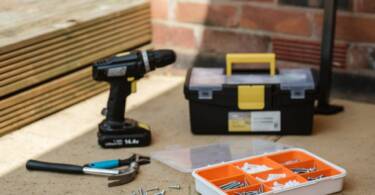In recent times, innovative technologies have changed the way the world operates. Now, it’s all about hi-tech handheld devices and gadgets using the latest smart-operation innovations. Quite a few of these developments and the introduction of new technologies are helping us change and improve our lives. There is also a similar trend of revolutionary technologies introduced in the HVAC systems and their applications, especially for homeowners. There are now technologies that change the way we can heat or cool our homes and operate the entire system in a very smart and advanced mode.
Many such HVAC innovations to boost a home’s comfort levels are already making waves with homeowners all over the UK. These are now equipped with interactive algorithms that enable the device intelligence to gather more data and assess improved operability. With such technologies at their disposal, many building managers and equipment operators prefer to customize operational criteria depending on the seasonal loading and density requirements.
While installing home systems for your heating and ventilation needs, especially the combi boiler systems with advanced control systems, it is best to consider all the available salient technology innovation features.
Few of the technological developments in HVAC :
1. Smarter Control Systems
Heating ventilation and cooling systems are now equipped with exact sensor systems. These sensors are basically field devices that record operational criteria like temperature, flow and footfall. With this data, the user can then set a control point for each of the operating parameters, as required. The better options include automatically controlled operation systems that read the data internally and allocate the requisite operating parametric control points for the system’s efficient functioning.
These systems can be set based on occupancy and the way the building is being used or operated. In recent years, a lot more intelligent sensor applications have been identified and implemented. These more intelligent control sensors can now detect and record information about what’s actually going on in the building or facility.
2. Enhanced Ventilation Controls
As the name suggests, these innovative control sensor systems comprise sensor-driven vent controllers which can actually replace the existing ceiling, wall or floor vents in any home. These can automatically piggyback onto any smart system for operational setpoints settings. These can also become part of any smartphone-controlled app to enable and implement precise and room-by-room temperature control.
Besides the temperature adjustments and control point settings, these systems can also facilitate the inclusion of specific sensors to monitor temperature, air pressure, indoor air quality factors and hot or cold circulation in a home.
3. Multi-Fuel Heat Pump
A multi-fuel heat pump is among the best boons for homeowners, especially considering the fluctuating energy availability and prices. These multi-fuel heat pumps could be an excellent option for homes in areas where electricity rates are affordable, and during winter, the temperature does not drop below freezing point. This innovation uses a combination of a gas furnace and a heat pump to provide efficient, cost-effective heating and cooling.
If external temperatures cross a threshold limit, the heat pump will automatically jump into action to pull in heat from outside. Similarly, when external temperatures are cooler, this heat pump becomes a distributor of cool air within the home.
4. Geothermal Heat Pump
Operationally, these heat pumps work almost similar to the earlier ones; this technology can help save a huge amount of money over its lifetime. These systems really make a difference in the life cycle operation of the HVAC system. In recent times, however, many homeowners have included this green-tech geothermal heat pump technology in their bid to adopt eco-friendly applications. It gets the energy directly from the earth through an underground looped pipe that absorbs the heat and carries it into the home.
Similar is the case when cooling is required. The process just gets reversed. The pump removes warm air and heat from inside the home and transfers it outside.
5. Variable Speed Drive Controls
While almost all Heating and Ventilation systems are generally designed to operate under peak loading conditions, these equipment systems usually operate only under sub-part-load conditions. This condition of sub-part-load is the main reason why these types of equipment need variable speed drive controls.
This means that these variable speed control drives will ensure optimum running of the system’s protocols to make them adequately right-sized for the application and its load conditions. This also provides higher efficiency on throughput at a much lower rate of energy wastage.









